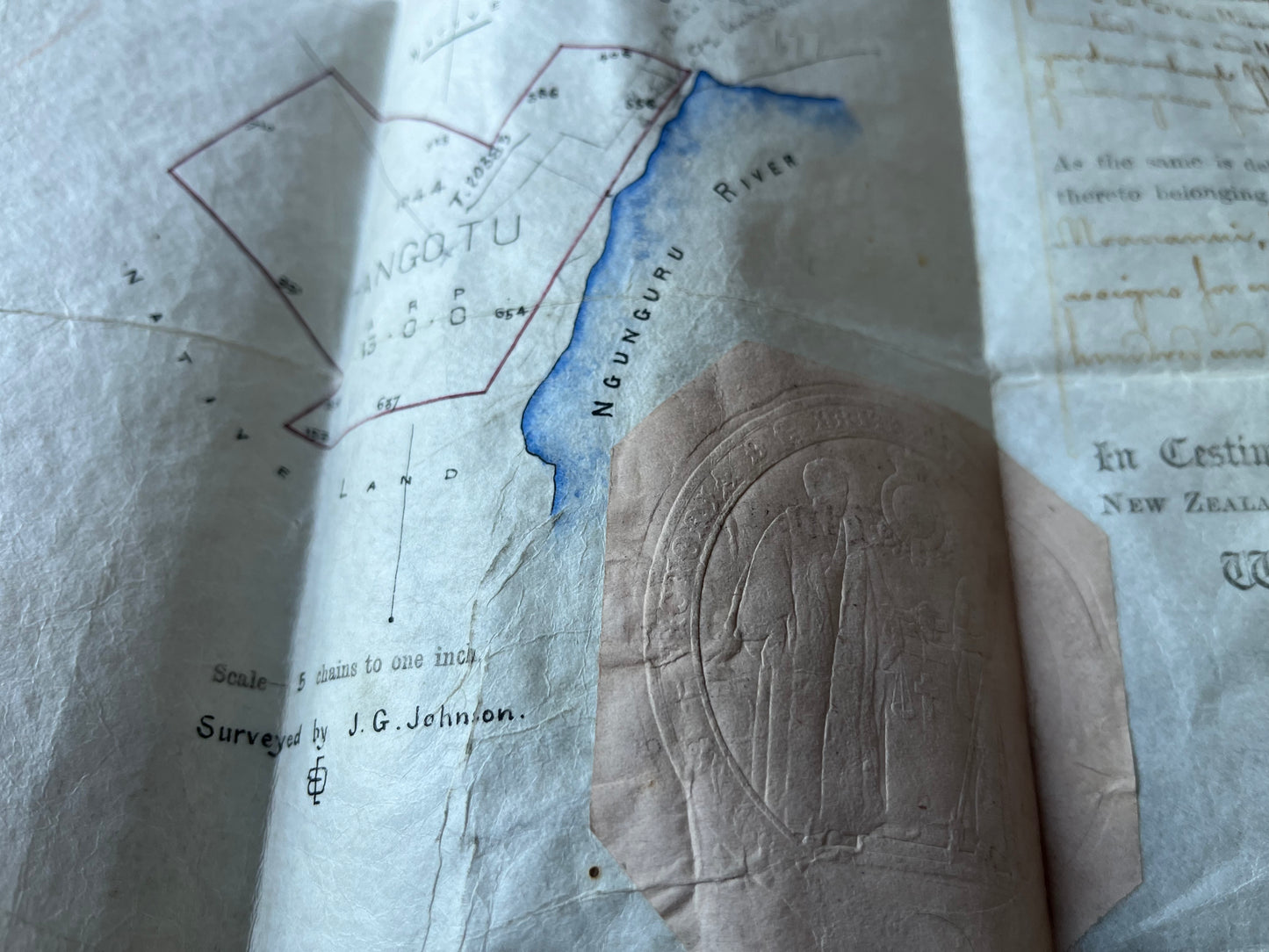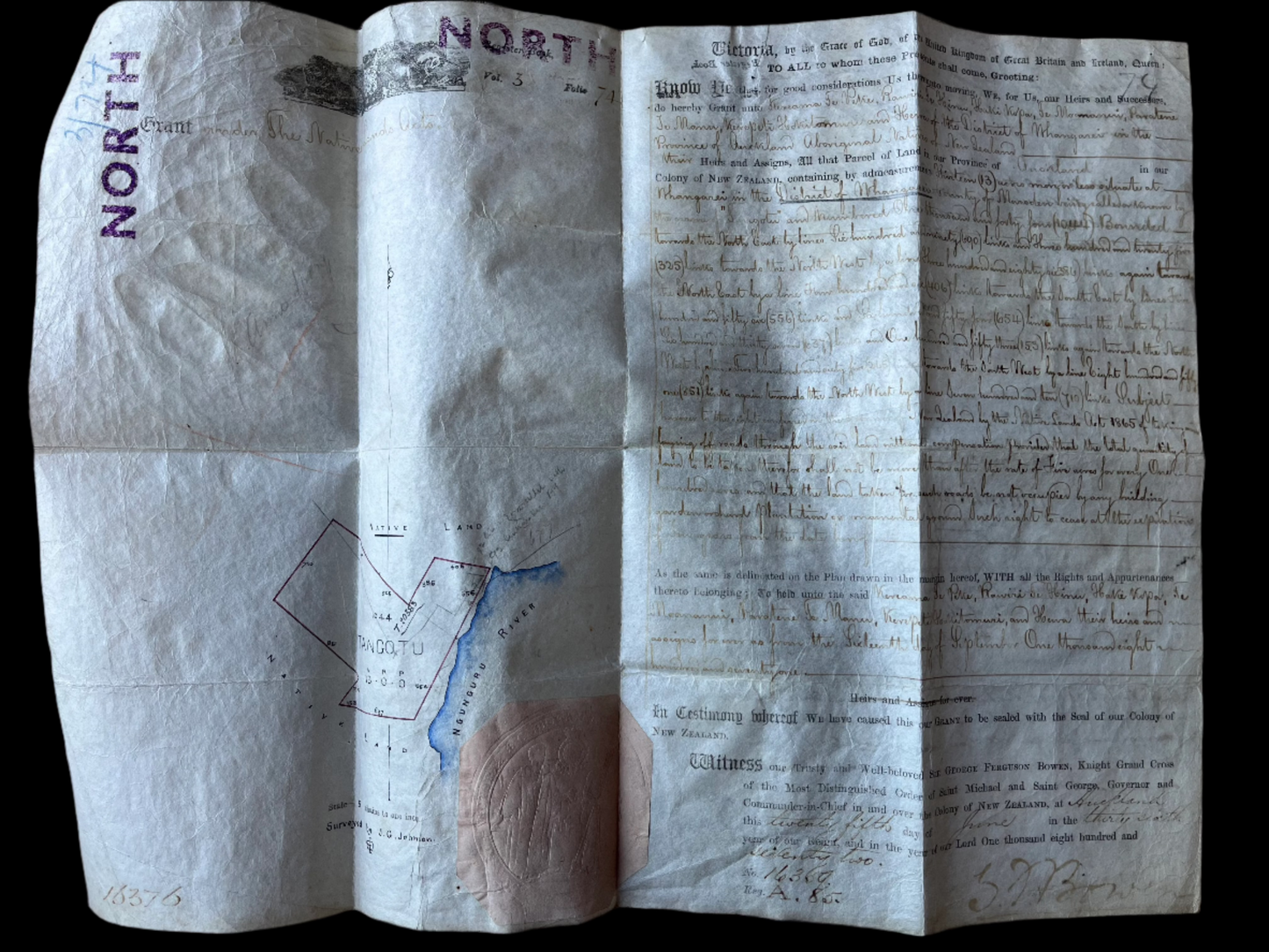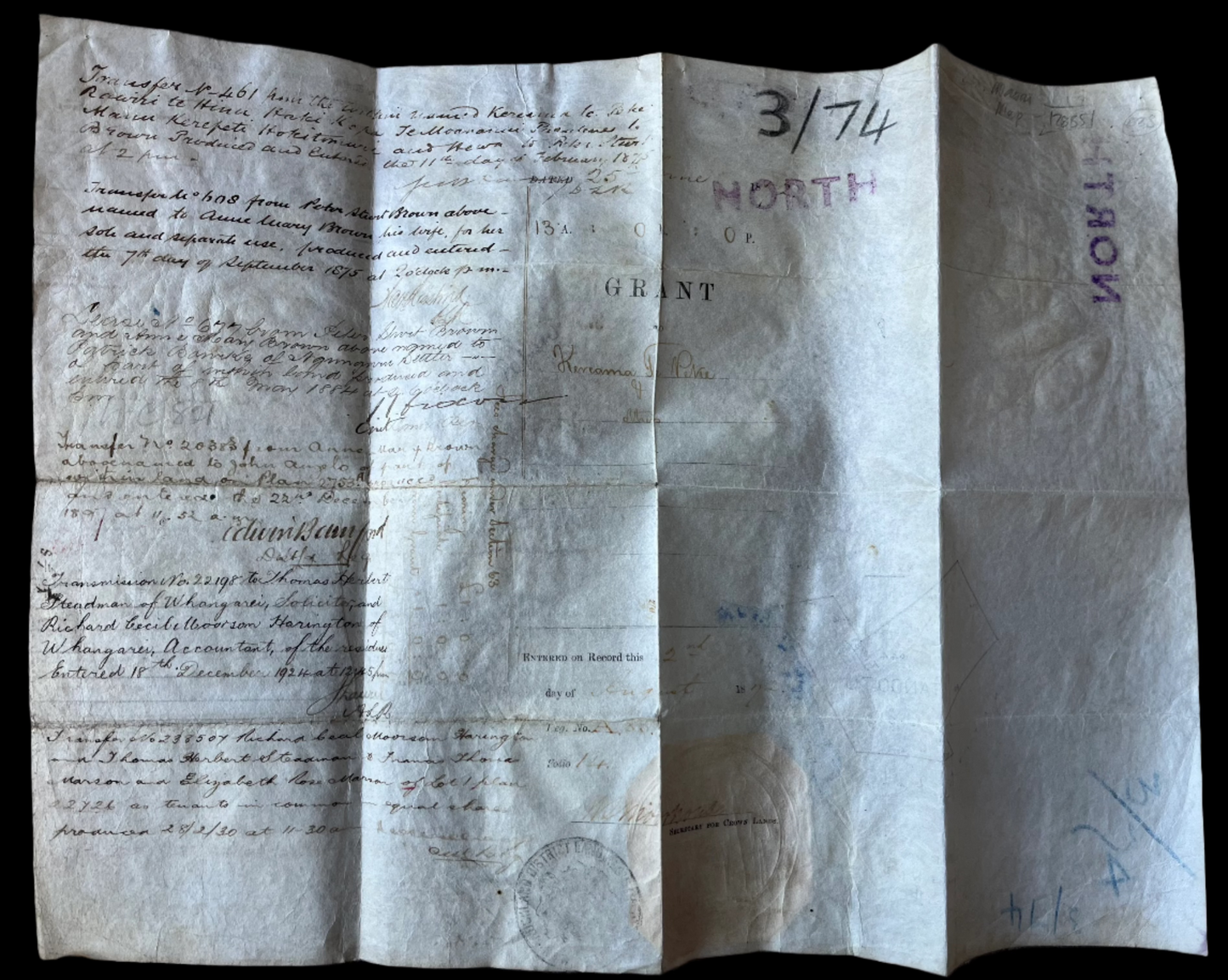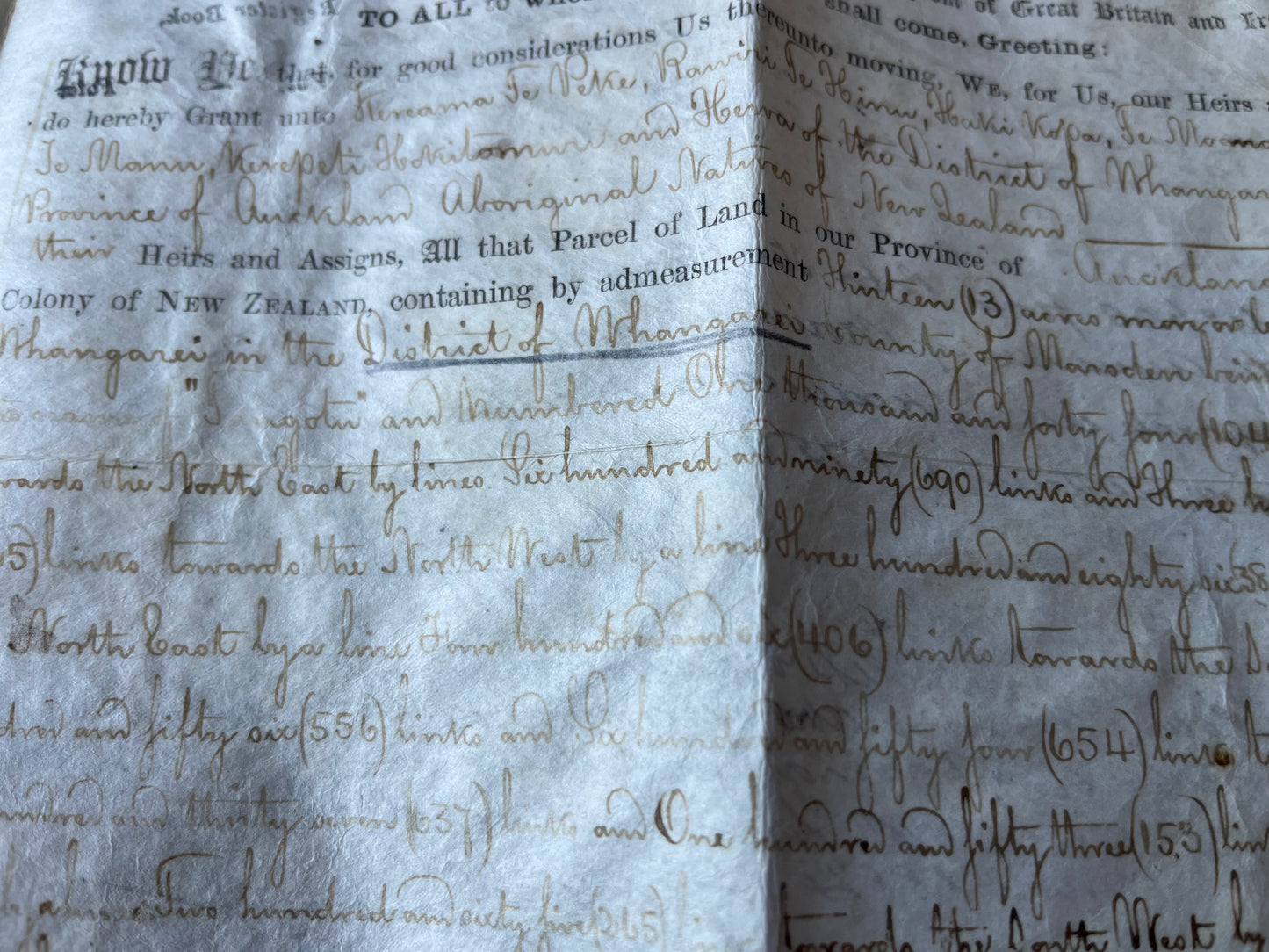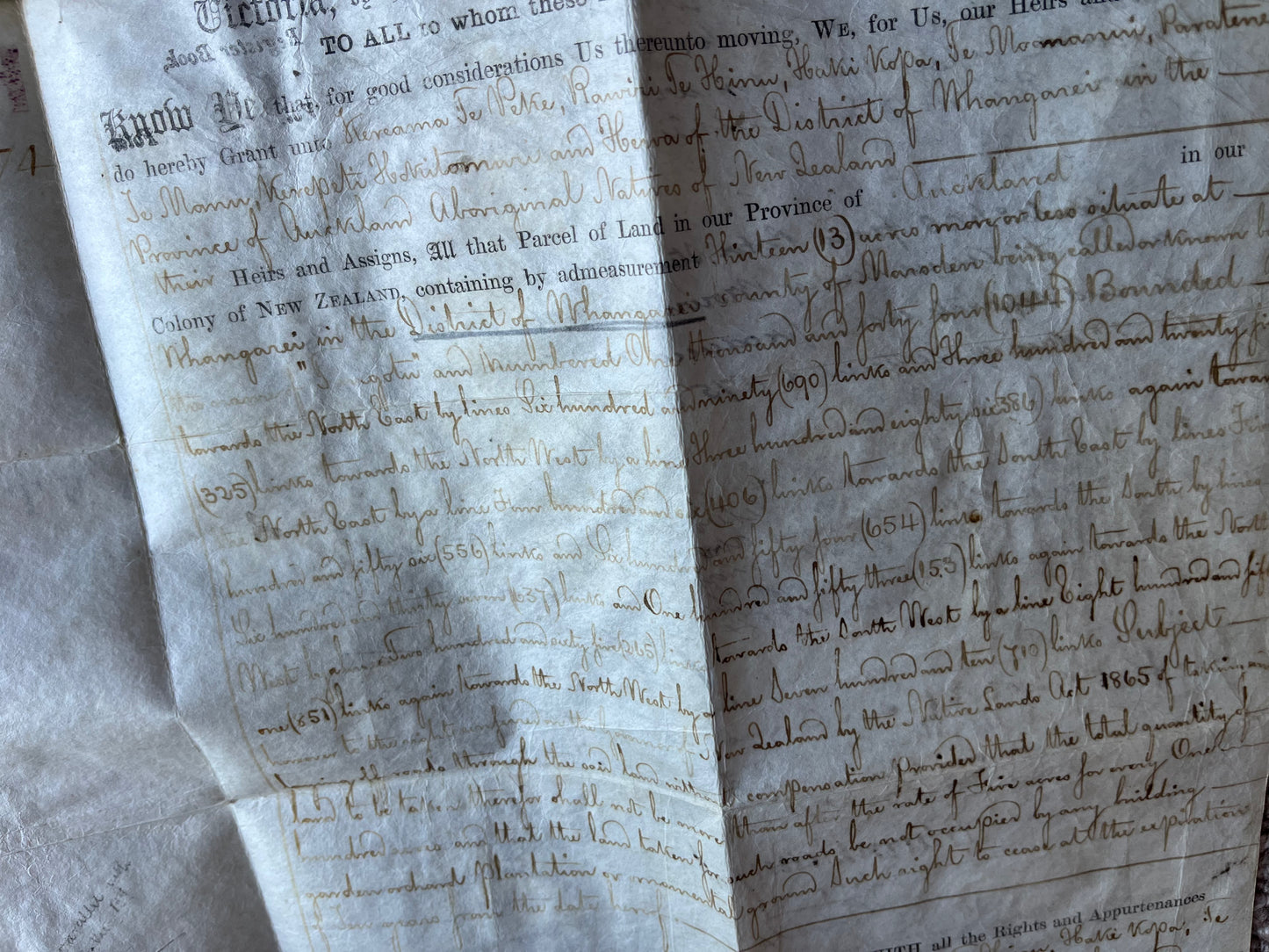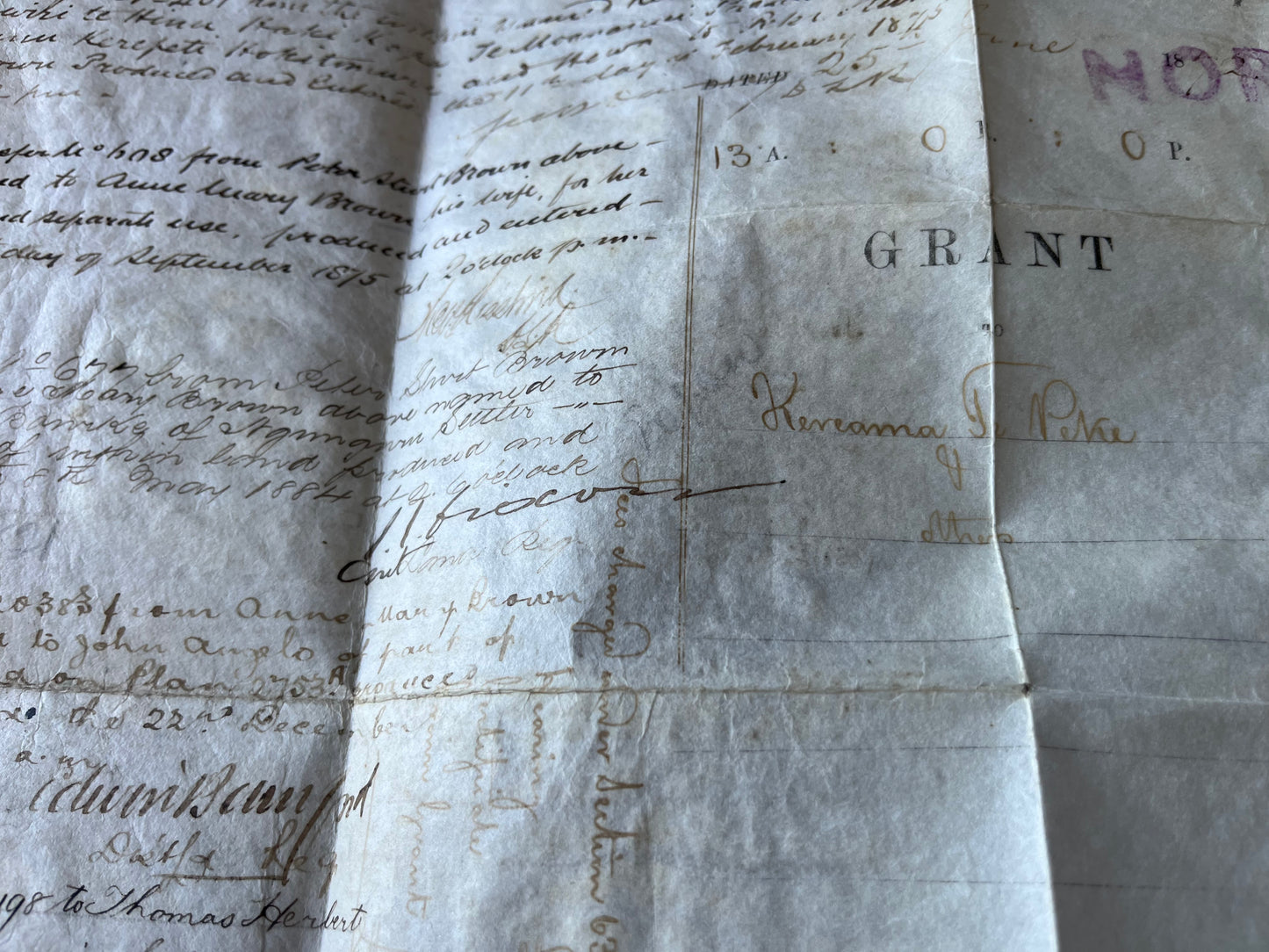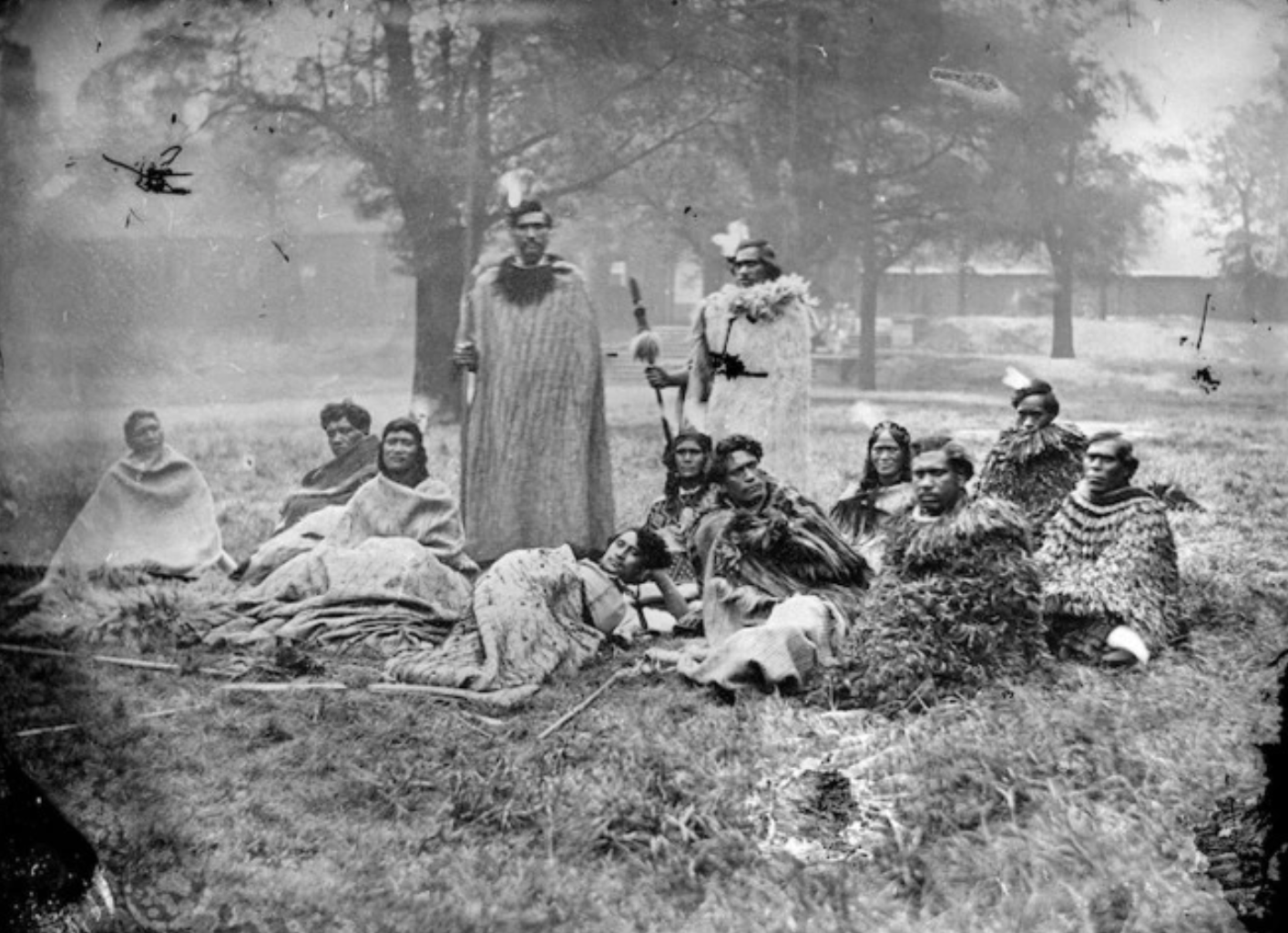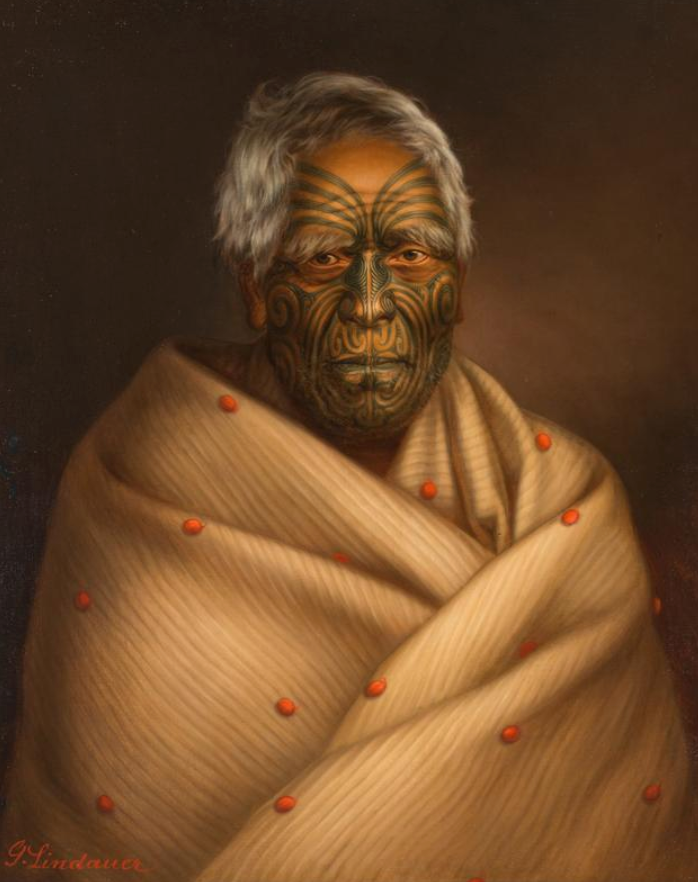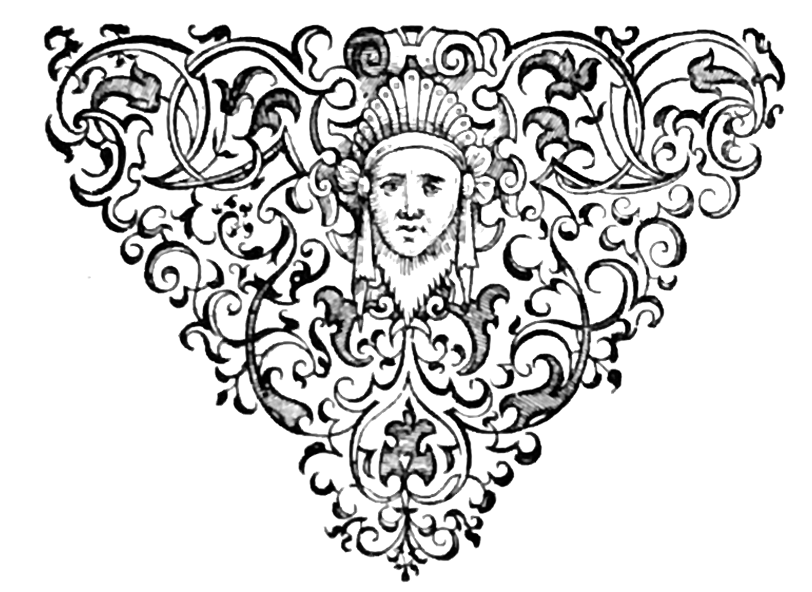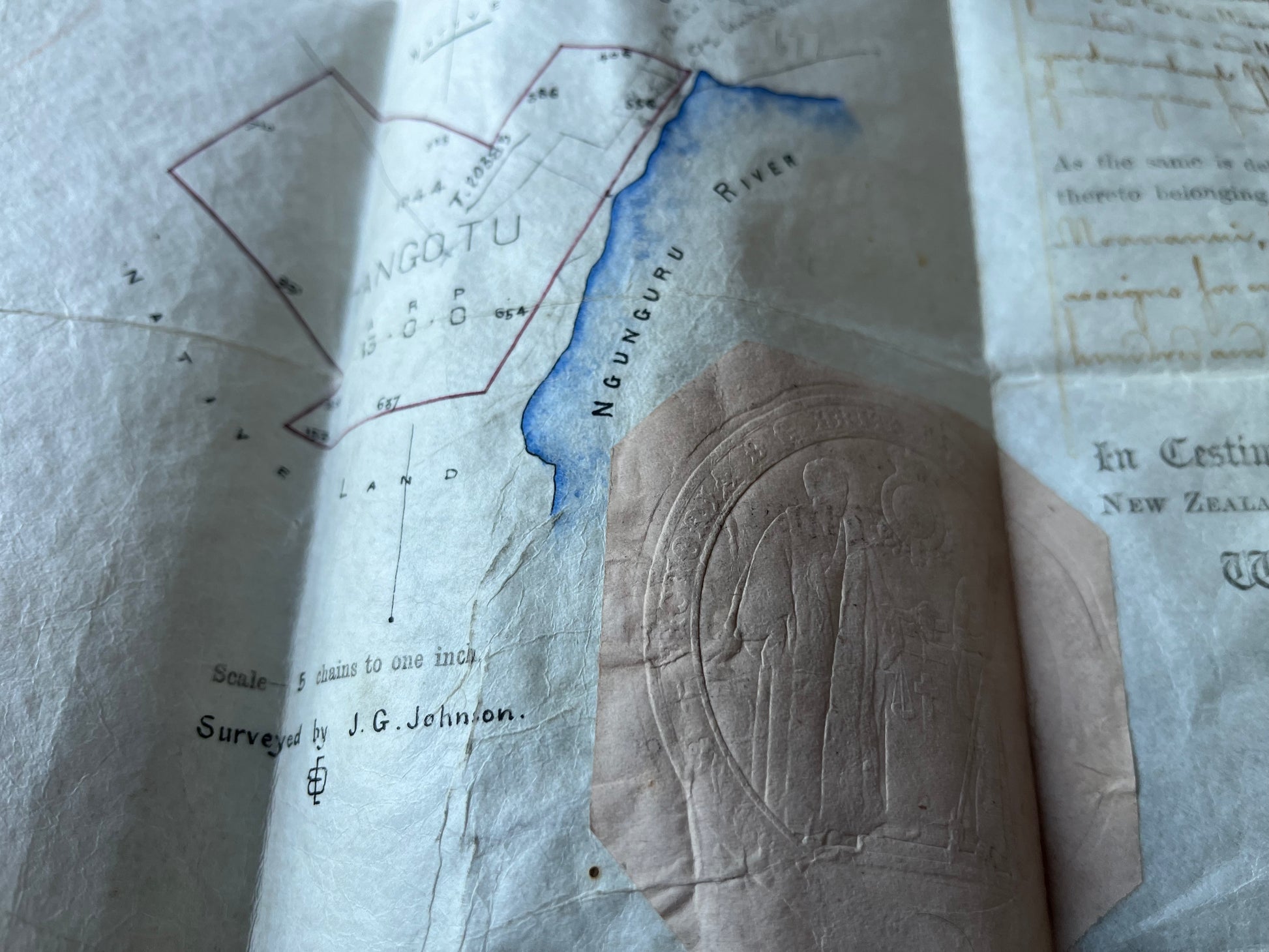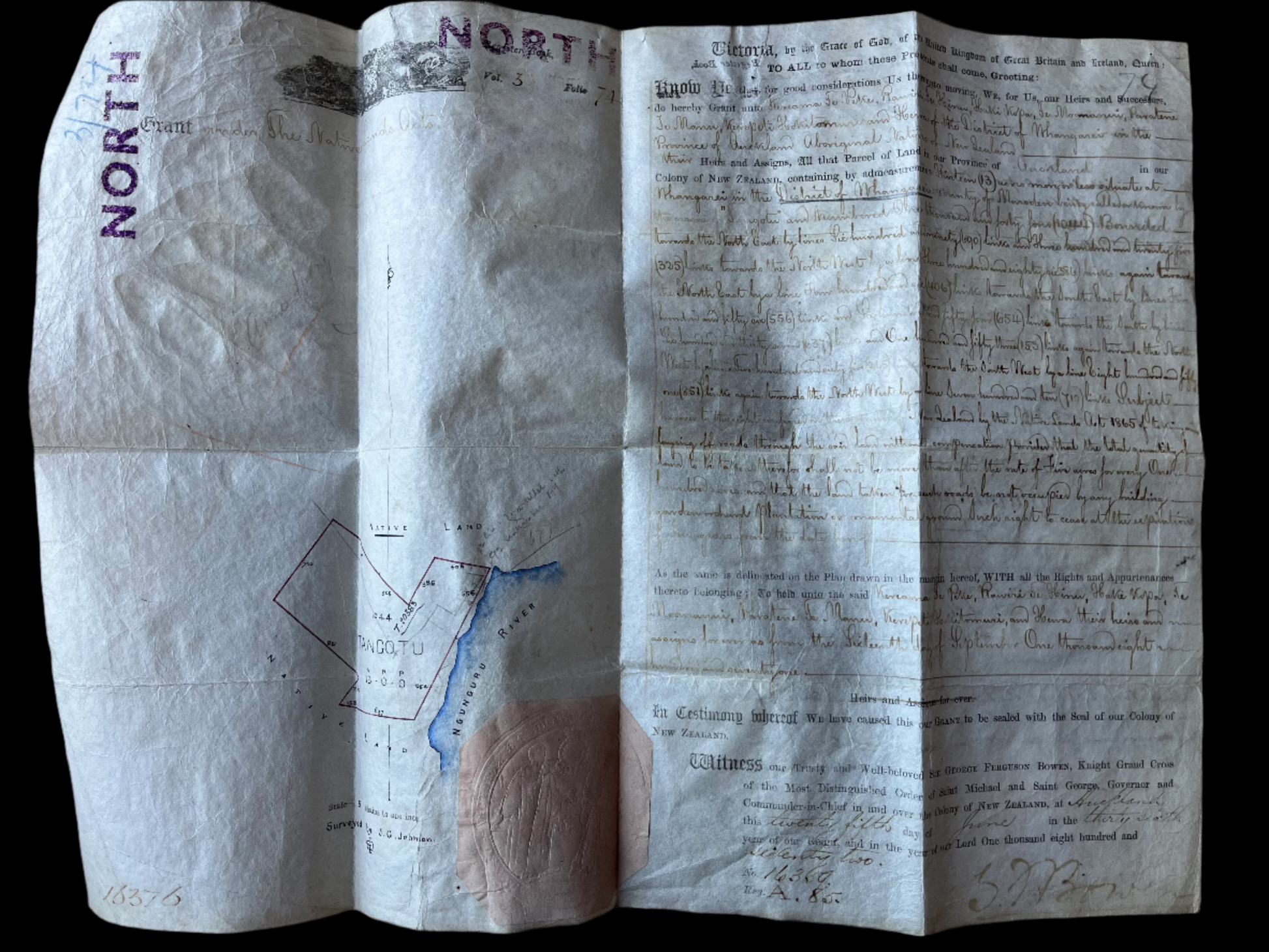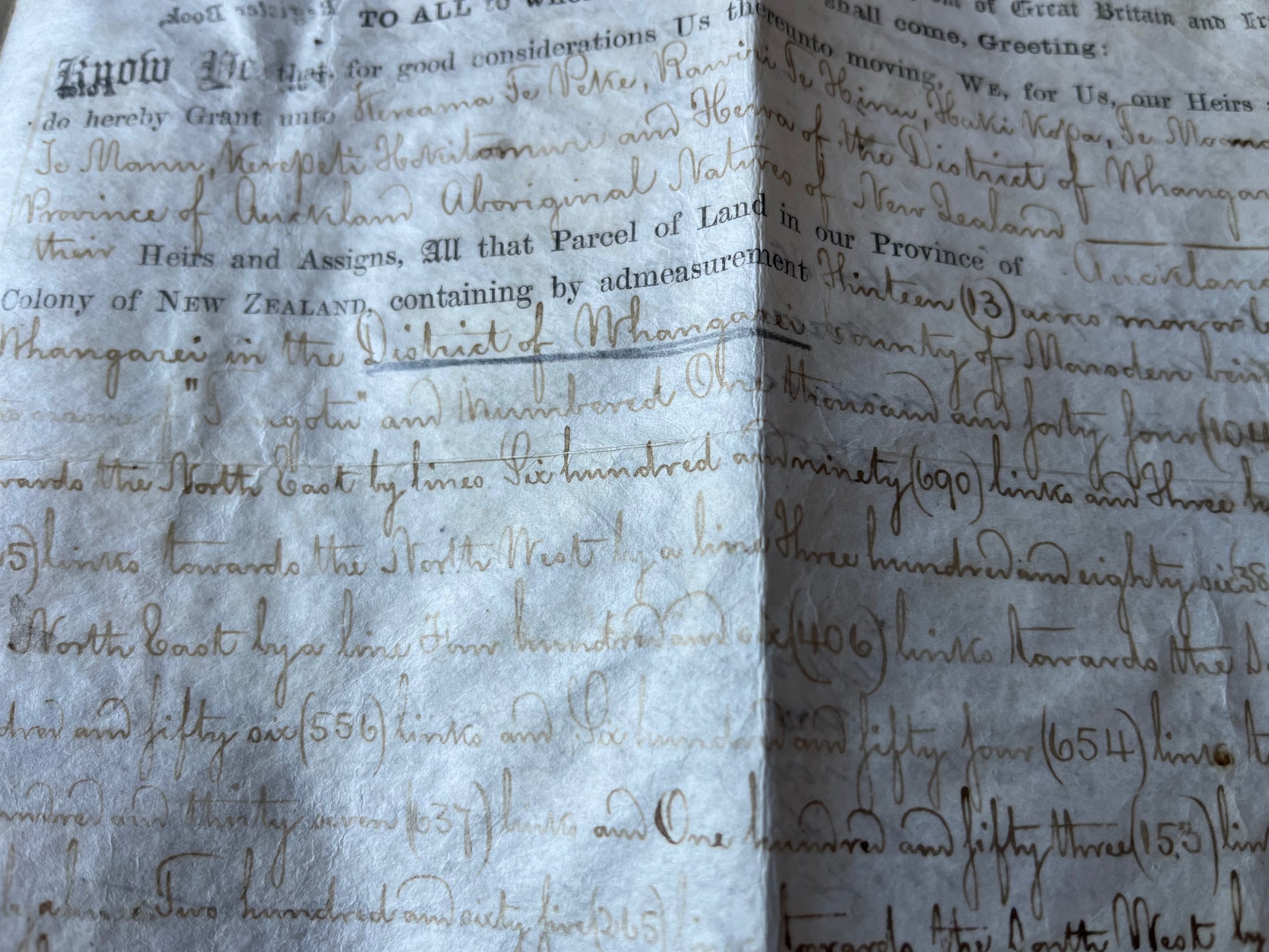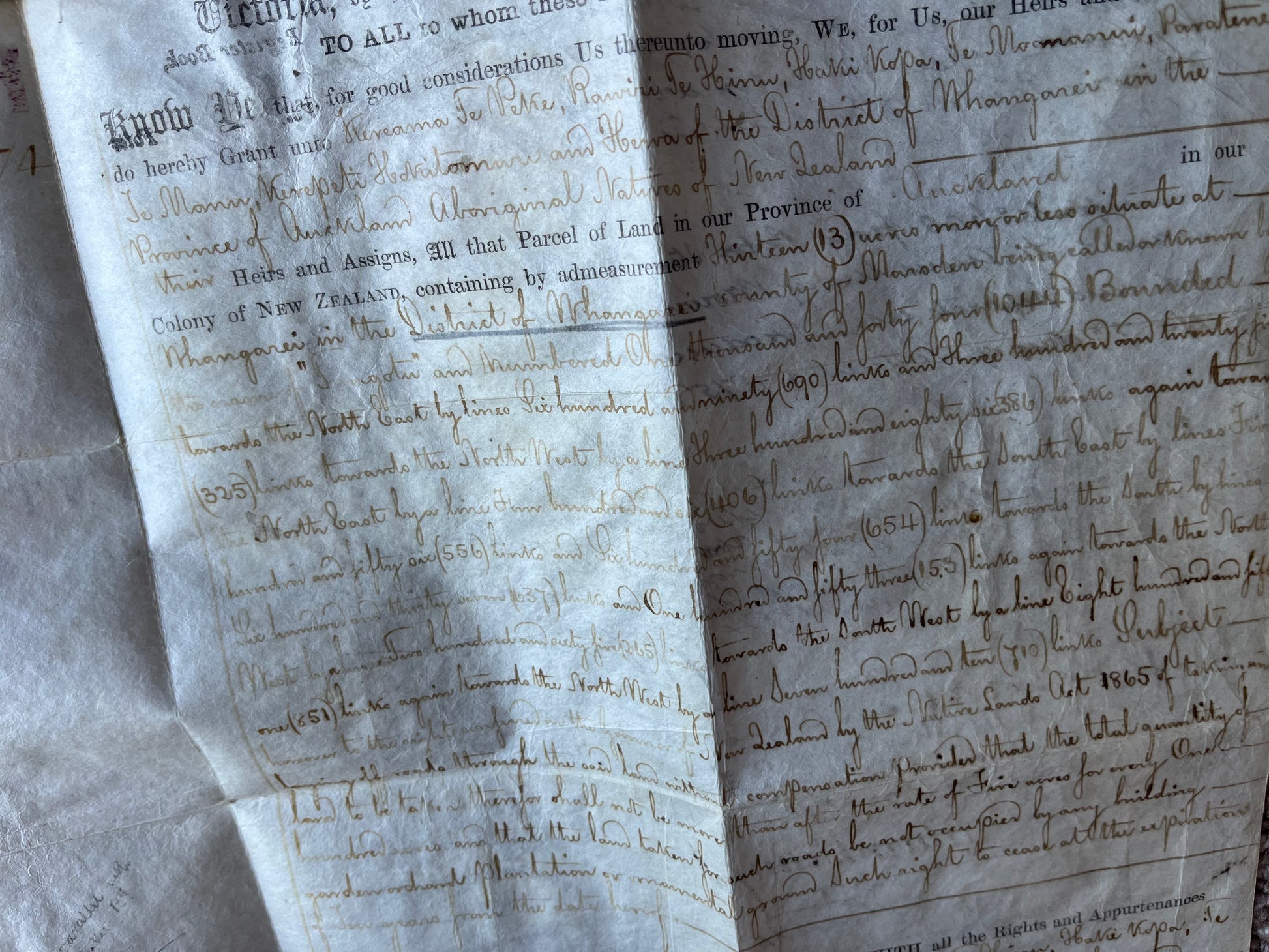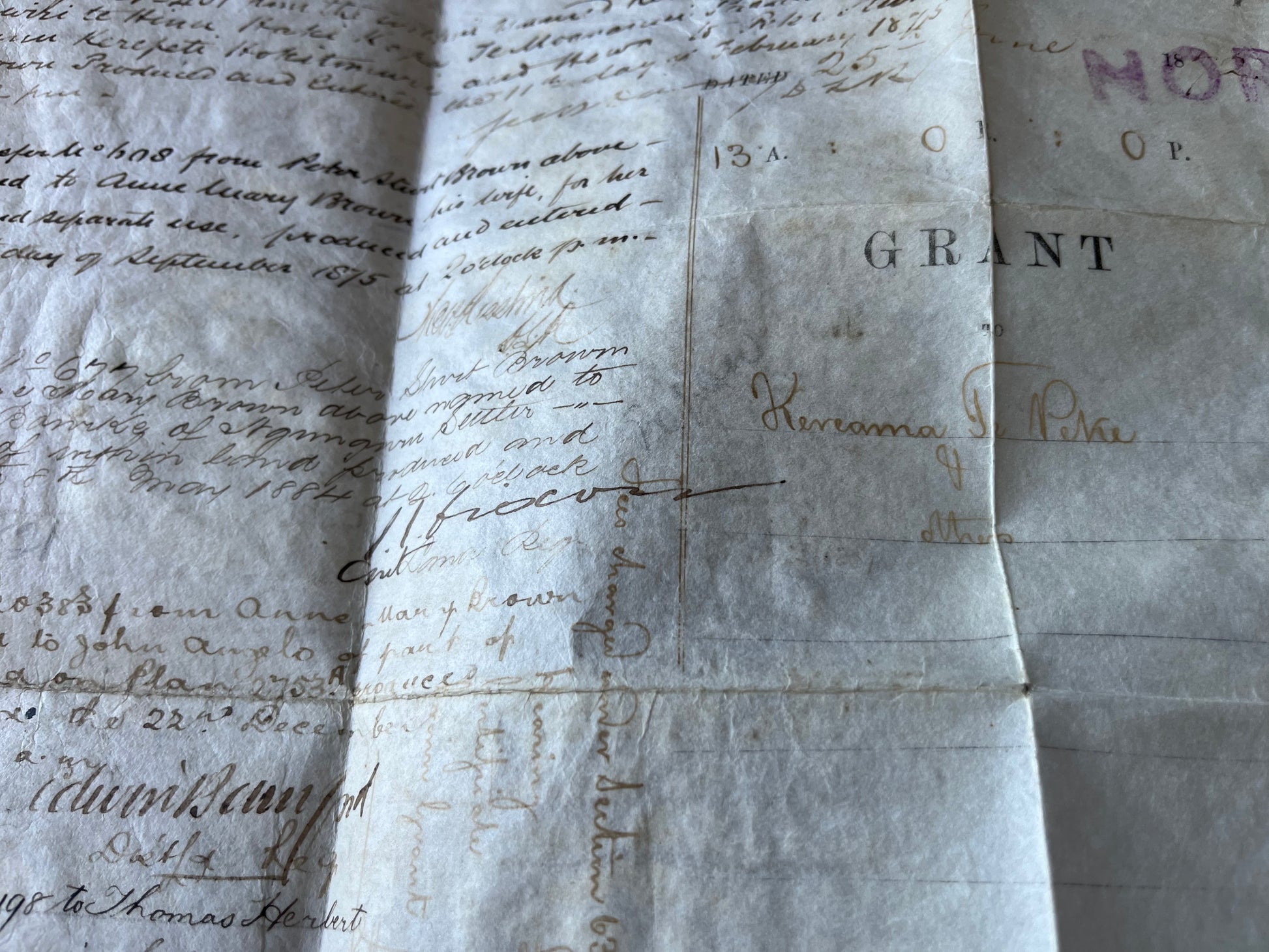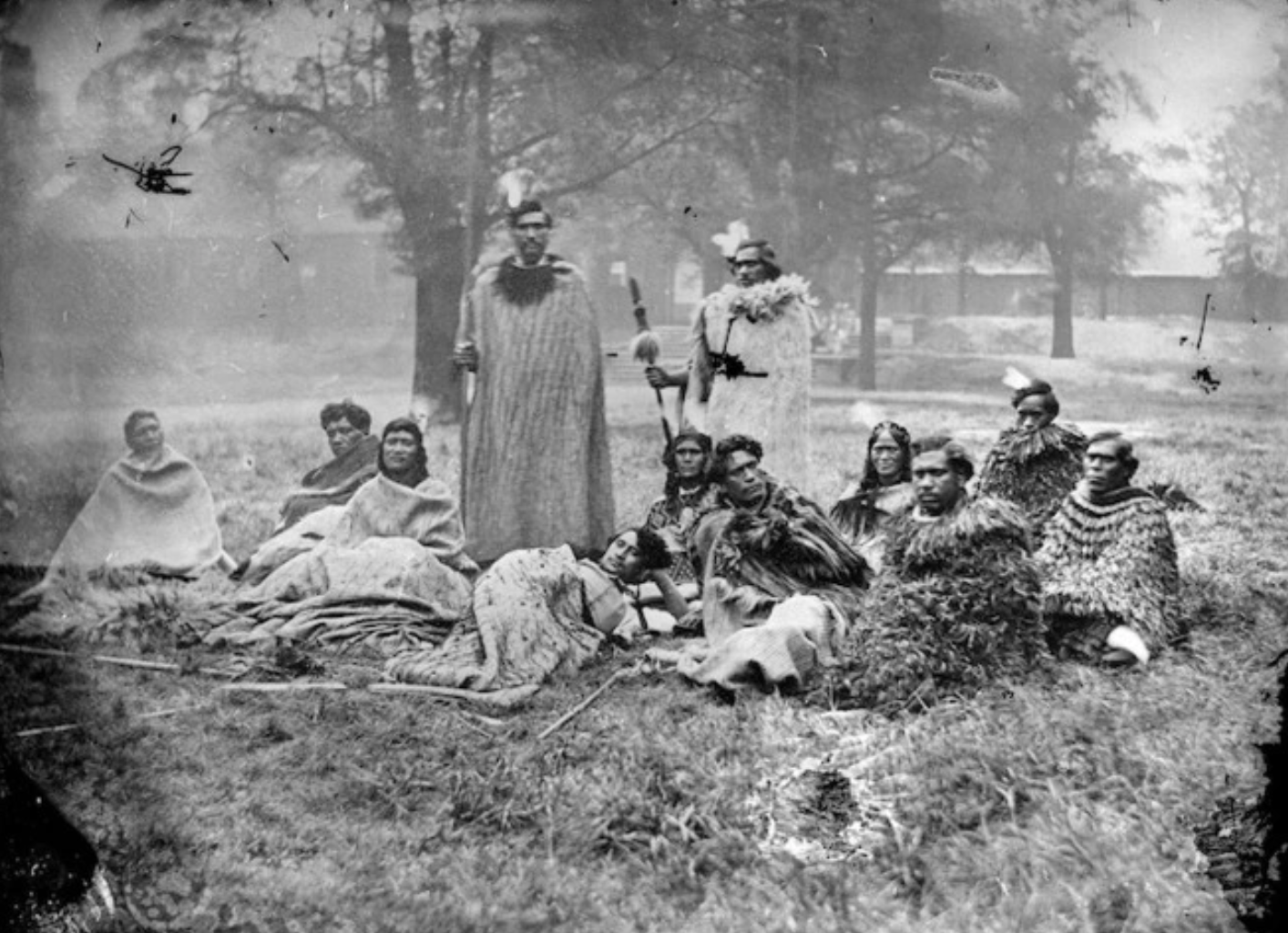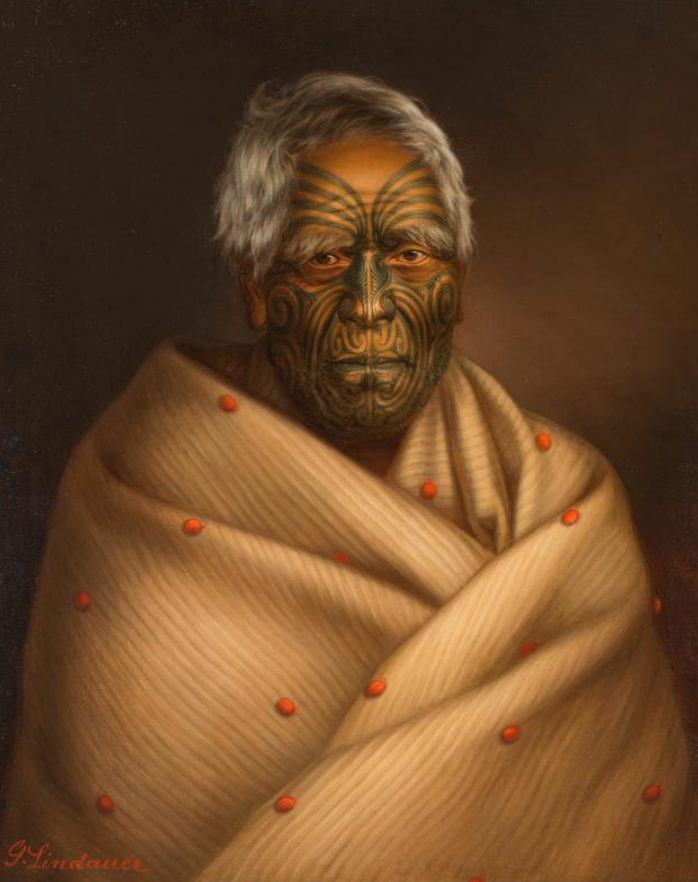De Bry Rare Books
1872 Māori Native Land Grant Ownership - Kereama te Peke, Paratene Te Manu - Ngunguru / Whangerei / New Zealand
1872 Māori Native Land Grant Ownership - Kereama te Peke, Paratene Te Manu - Ngunguru / Whangerei / New Zealand
Couldn't load pickup availability
Native land ownership grant from 1872 to Kereama Te Peke, Paratene Te Manu and others Māori chiefs for a parcel of land at present day Ngunguru - Whangerei District in Northland.
-Single document on Vellum with hand drawn map of "Tangotu" (Present day Ngunguru) by the Ngunguru river in Whangerei, Northland, New Zealand.
-33 x 45cm approx. Old folds. Wear and marks to vellum but generally very good.
-Small map of the surveyed land area outlined in red with a blue river adjacent to it.
-The New Zealand seal is attached to the document and the signature of the Governor Sir George Ferguson Bowen is present.
-Later land sales are written on the verso (including an onward sale to European settlers in 1875).
The New Zealand Native lands acts of the 1860s and 1870s facilitated the colonial appropriation of Māori land. The acts forced Māori to apply for ownership of their own lands, parcelling them up to facilitate lands being sold on. A maximum number of signatories were allowed to sign, forcing a move away from traditional Māori land ownership attitudes where land belonged to many.
Māori had to pay for expensive surveys and legal fees to acquire their own land. With minimal existing capital, they were encouraged to pay off these debts by selling their land, while local store keepers and traders also encouraged Maori to build up credit and debts, which could then only be paid off by selling land. This cycle led to massive amounts of land shifting from Māori to British ownership. 66 million acres of land were owned by Māori in 1840, but by the end of the 1800s only 10% of this remained in Māori ownership. The wrongs of these unequal settlements are still being righted to this day through the Waitangi Tribunal.
One contemporary member of parliament - Mr Sewell - in 1870 said:
"The object of the Native Lands Act was two-fold: to bring the great bulk of the lands of the Northern Island which belonged to the Natives, and which, before the passing of that Act, were extra commercium . . . within the reach of colonization. The other great object was, the detribalization of the Natives,—to destroy, if it were possible, the principle of communism which ran through the whole of their institutions, upon which their social system was based, and which stood as a barrier in the way of all attempts to amalgamate the Native race into our own social and political system."
This document shows that after 3 short years this section of land was sold off by the Māori owners to European landholders, likely to pay off debts incurred to survey the land and for associated legal fees.
Signatories include: Kereama te Peke (Ngāti Kahu), Rawiri te Hinu (Ngāti Hine), Haki Kopa (Ngāti Kahu), Te Mourmanui (Ngāti Hine), Paratene Te Manu (Ngāpuhi), Kerepeti Kokitomuri.
Among the signatories Paratene Te Manu is known to have been painted by Lindauer and his portrait survives to this day in Auckland Museum (see photos). He was also one of 14 Māori to have travelled to England in 1863 in a failed attempt to meet the Queen and discuss Land Rights (Photo of the delegation shown in description - not included).
An example of mapping as power to facilitate colonisation.
